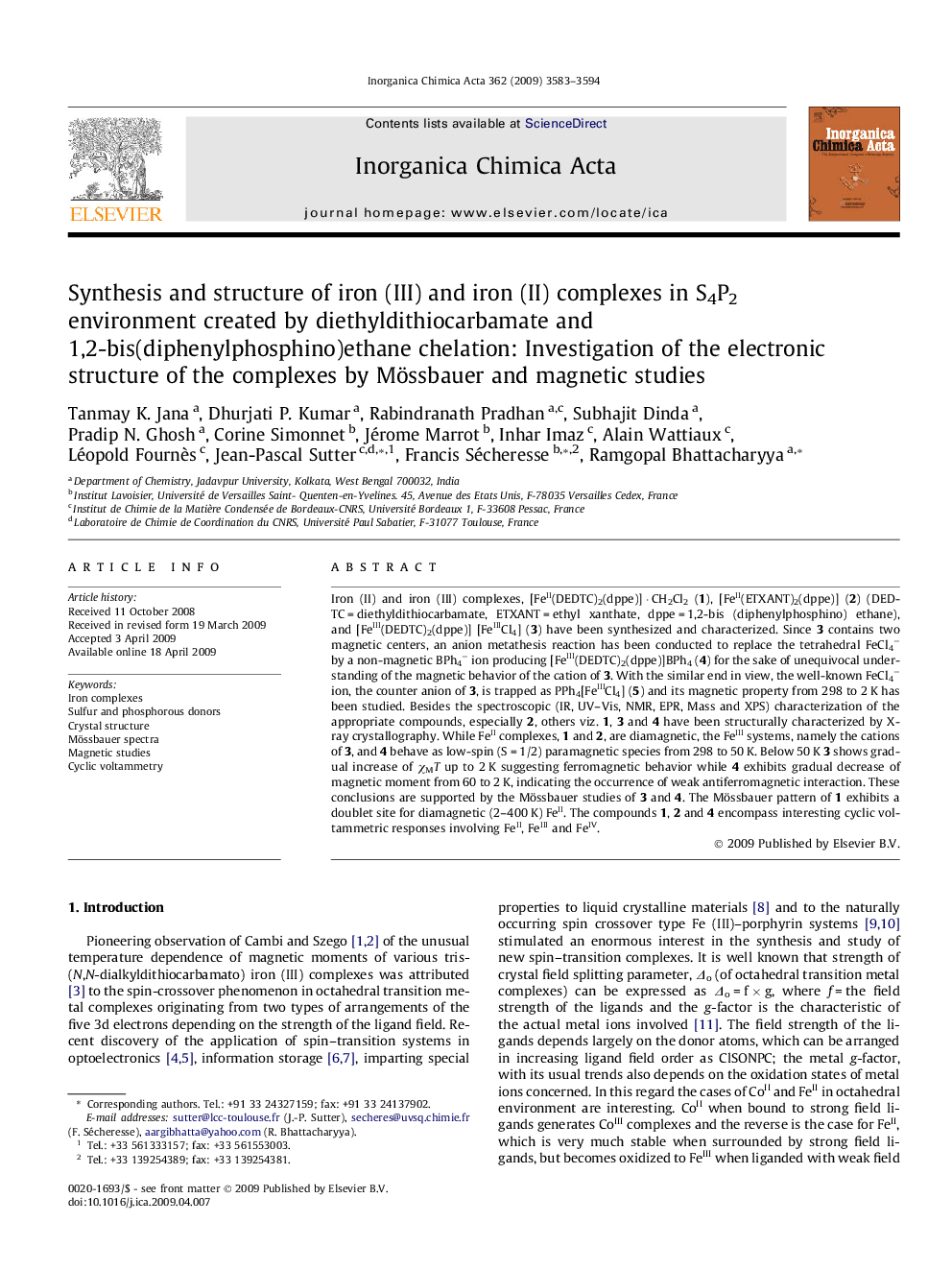| کد مقاله | کد نشریه | سال انتشار | مقاله انگلیسی | نسخه تمام متن |
|---|---|---|---|---|
| 1309700 | 975218 | 2009 | 12 صفحه PDF | دانلود رایگان |

Iron (II) and iron (III) complexes, [FeII(DEDTC)2(dppe)] · CH2Cl2 (1), [FeII(ETXANT)2(dppe)] (2) (DEDTC = diethyldithiocarbamate, ETXANT = ethyl xanthate, dppe = 1,2-bis (diphenylphosphino) ethane), and [FeIII(DEDTC)2(dppe)] [FeIIICl4] (3) have been synthesized and characterized. Since 3 contains two magnetic centers, an anion metathesis reaction has been conducted to replace the tetrahedral FeCl4− by a non-magnetic BPh4− ion producing [FeIII(DEDTC)2(dppe)]BPh4 (4) for the sake of unequivocal understanding of the magnetic behavior of the cation of 3. With the similar end in view, the well-known FeCl4− ion, the counter anion of 3, is trapped as PPh4[FeIIICl4] (5) and its magnetic property from 298 to 2 K has been studied. Besides the spectroscopic (IR, UV–Vis, NMR, EPR, Mass and XPS) characterization of the appropriate compounds, especially 2, others viz. 1, 3 and 4 have been structurally characterized by X-ray crystallography. While FeII complexes, 1 and 2, are diamagnetic, the FeIII systems, namely the cations of 3, and 4 behave as low-spin (S = 1/2) paramagnetic species from 298 to 50 K. Below 50 K 3 shows gradual increase of χMT up to 2 K suggesting ferromagnetic behavior while 4 exhibits gradual decrease of magnetic moment from 60 to 2 K, indicating the occurrence of weak antiferromagnetic interaction. These conclusions are supported by the Mössbauer studies of 3 and 4. The Mössbauer pattern of 1 exhibits a doublet site for diamagnetic (2–400 K) FeII. The compounds 1, 2 and 4 encompass interesting cyclic voltammetric responses involving FeII, FeIII and FeIV.
Low-spin FeII and FeIII complexes have been synthesized and structurally characterized. Magnetochemistry, Mössbauer spectroscopy, XPS, FAB mass spectroscopy and electrochemistry of these complexes have been thoroughly investigated. The pictogram shows the structure of cationic FeIII complex and its magnetic behavior, with BPh4− as counter anion.Figure optionsDownload as PowerPoint slide
Journal: Inorganica Chimica Acta - Volume 362, Issue 10, 1 August 2009, Pages 3583–3594